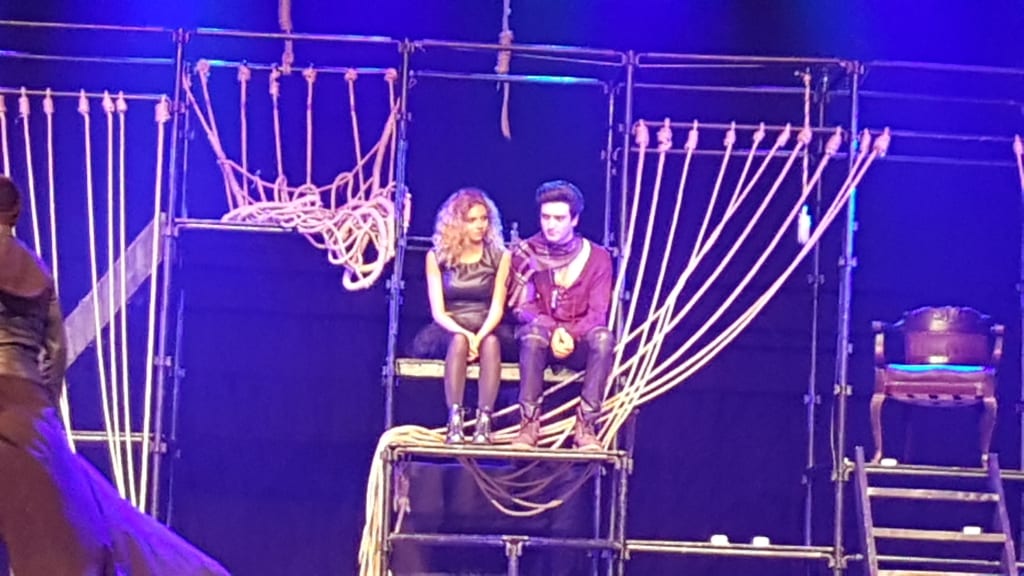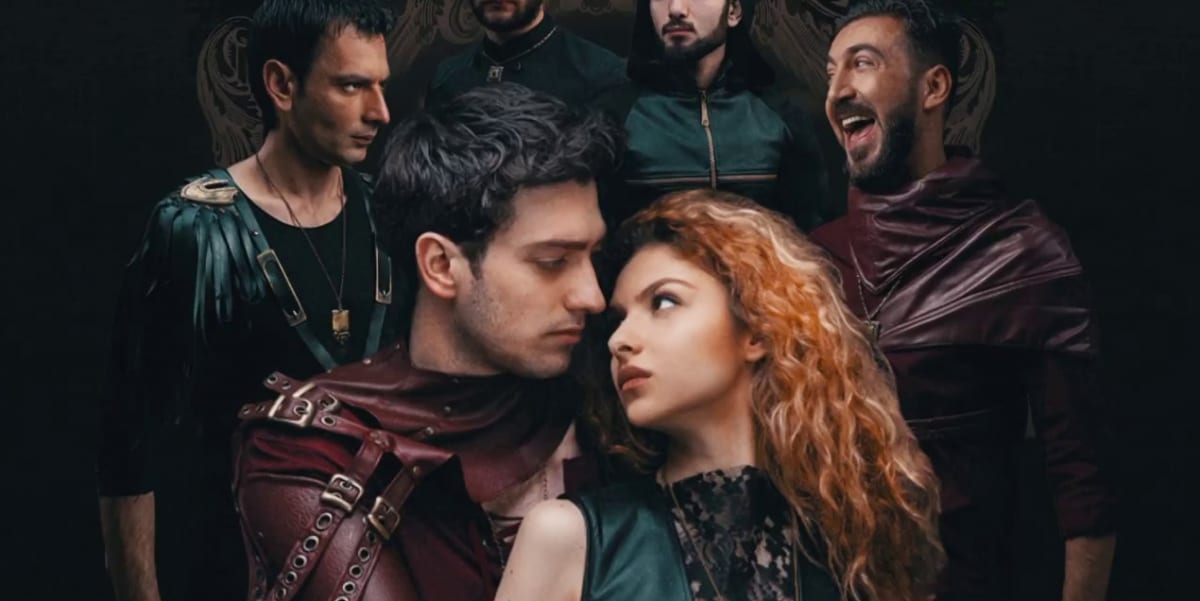Romeo and Juliet is Shakespeare’s best-known and probably most-performed play. How does a director challenge theatre audience with yet another Romeo & Juliet?
The 32 year old Armenian director Lusine Yernjakyan decided to direct a production that would appeal to young people. In Armenia, there have been only two productions of Romeo and Juliet in the last 50 years. The challenge is to get a young audience not familiar with Shakespeare to see something of themselves in the Bard’s work, though the last production of this play in Armenia took place some 30 years ago.
The story of the doomed young love, in this production, is narrated through the eyes of Friar Laurence, performed by Senik Barseghyan. He is the priest who marries the lovers, Romeo (Jora Martirosyan) and Juliet (Armine Nazari-Dekhnavi). Friar Laurence retells the woes that had befallen Romeo and Juliet, as he sees them after the tragedy has happened. It is a confession of a grieving priest whose good intentions paved the way to hell. His hopes to bring to an end the ‘ancient grudge’ between the Montagues and the Capulets, the young lovers’ families, proved to inflict death and torment on both houses.
Does it work? Is it still Shakespeare’s play or merely the skeleton of the play?
Editing and turning the play into a ‘confession’ with flashbacks enacted by some of the cast reduces the characters into cardboard figures. There is also a sense of emotional restraint; except, that is, in the scene where Tybalt (Vahe Ziroyan) eventually kills Mercutio (Jora Hovhannisyan). This scene is staged as part of a ‘court hearing’ to be judged by Prince Escalus (Suren Arustamyan), the Prince of Verona. The performance is good and it teases out dramatic tension. But even this scene hangs in the air like a picture without a frame. The overall performances are disjointed, lacking dramatic cohesion.

The set is simple, yet impressive in its multiple use and effects. A large frame with ropes hanging down, make up the set. It is the playground in which the Montagues and the Capulets fight and challenge each other. It is also where Juliet finds herself caged when forced to marry her father’s choice of a husband. The ropes conjure up images of imprisonment and a sense of entrapment, like a spider web or a cell. In that sense, it is clever and consistent with the end of the play, as envisaged by the director, Ms Yernjakyan.
The combination of flashing lights and varied music accompaniment creates an atmosphere befits teenagers and young people’s world. The twist is in the unfolding plot, which ends when a rope is used by the Friar to put an end to his life.
The change of scenes feels like turning pages in an album, with a commentator telling the story. This proves to be the production’s strength, as it draws in young people who are attracted to the music, disco-like lighting, and a set without frills. The young members of the audience loved the show. The more mature audience, like the reviewer, have mixed feelings. Yet, to be fair to this enthusiastic troupe, they had little time to practice in this larger space and there was a great deal of anxiety as to how the sophisticated audience in Gdansk will respond to their production of Shakespeare’s best known play, particularly as it is delivered in Armenian. Armine Nazari-Dekhnavi’s Juliet was, noticeably, exceptionally nervous, and this must have affected much of the performance. Those who have seen this production at Yerevan Chamber Theatre, where it was first staged, said that the performance they saw in Yeravan was simply excellent.

